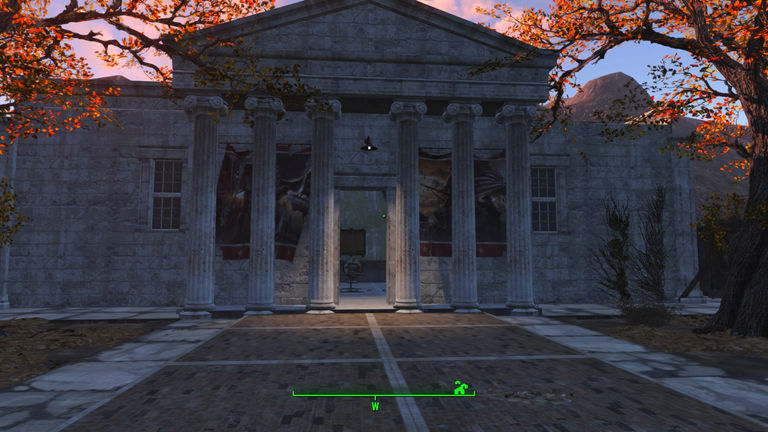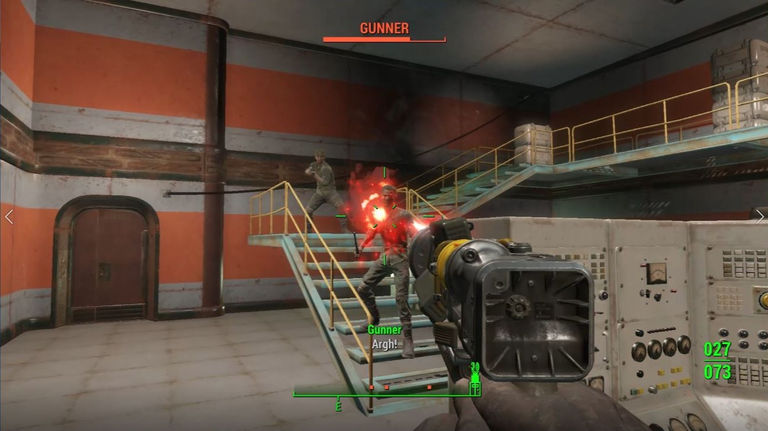
Next Settlement
DEVELOP INFO
Game Engine:
Game:
Mode:
Start Date:
Shipped Date:
Time Spent:
Creation Kit
Fallout 4
Single Player Level
03/02/2019
05/04/2019
220 - 260 Hours
LEVEL OVERVIEW
"Next Settlement" is a standalone mod made for Fallout 4. The quest mainly takes place in a new world map called Eastbay, where the player will meet a group of people and help them defeat the invaders.
Scout David is a soldier coming from the Olive Union, a former part of the Minutemen who left the Commonwealth and settled down in the Eastbay. He asks the player to deliver a blueprint to his settlement, which is a key element to defeat the invaders. As the player delivering the item to the settlers, he will discover the crisis they are facing and help them through the difficulties.
DESIGN GOALS
-
Designed one quest with 10+ stages, mainly focused on four different encounters and a core story
-
Brought one small world and two interior spaces from the paper map stage to the final polish stage
-
Shaped 6 characters. scripted their behaviors and dialogs a story with meaningful choices and multiple branches
PLAY THROUGH
GALLERY
OVERVIEW MAPS

Exterior Overview Map


Research Lab Overview Map
Radiation House Overview Map
WORLD BUILDING
Final Goal:
To create an exterior map for the expected gameplay
Step 1: Initial structure layout
-
Draw a quick paper map and place the key locations, such as a world entrance, a settlement, and a town.
-
Try to connect each location by road.
-
Refine the map considering the terrain and players' intended route.

Quick Paper Map Draft
Step 2: Iteration for gameplay purpose
-
Design the quest, draw a flow chart to have a clear understanding of the gameplay sequence.
-
World layout changes for gameplay purposes.
-
For example, I integrated the settlement into the town in order to shorten the time players spending on the way.
-
I also realized the enemy base (building for combat) should a larger architecture having several stories while the apartment (space for NPC living) could be a smaller townhouse.
-

Quest Flow Chart

Step 3: Layout optimization for reality
-
Give the architecture functionality and explain why it is there.
-
For example, I replaced the world entrance with a metro station and placed it into the town, which perfectly explained how people got into the world.
-
What's more, I added commercial decorations nearby because metro stations usually are located near commercial streets.
-
Another example, the settlement used to be a museum close to a city monument.
-
-
Divided the town into several different areas according to their functions.
-
Such as the town hall, commercial street, residential areas, port areas, parks, etc.
-
The buildings in each area were different, even though some were non-gameplay areas. For instance, residential townhouses are low while offices are tall.
-
Their unique appearance and height well explained their usage and made the town look very real.
-
World Top View in Editor
Step 4: Special Buildings
-
Construct key locations with unique models and textures.
-
Landmark design.
-
I placed a towering monument at the center of the world. The player could see it clearly from every direction.
-
-
Secondary landmark design.
-
I also added some unique buildings in some areas to serve as a local landmark.
-
For example, a plaza in the park and a huge billboard above the garage.
-
They worked for conveyance and helped players to memorize the map as well.
-

The Museum (Settlement)

The Metro Station

Landmarks ( Monument, Lab)
Step 5: Final Decoration
-
Add set dressings, decorative items, wires, and lights.

Landmarks ( Monument, Plaza, Parking Board)
COMBAT DESIGN
Section 1: Interior Combat
Design Goal:
To design a 3-story building structure for players' exploration and fighting
Steps:
-
Used Adobe Illustrator to draw a 2D digital map containing the layout of each floor.
-
Added locked doors, obstacles, collapsed floors, and broken wall pieces to create players' paths.
-
Constructed the space in the editor.

Initial Digital Design for the 3-story Building
Problem met:
There was very little vertical gameplay when I built it up in the editor.
Solution:
I reconstructed some rooms and designed several double-story rooms instead of rooms with equal height.
Final Result:
By doing this, the rooms now owned different internal structures, which provided different gameplay in each area. It also made it easier for players to memorize the spaces.


Examples of Vertical Combat
Section 2: Exterior Combat
Design Goals:
To create a narrative through combats
Solutions:
-
Starting the first combat between NPCs and the invaders when the player entered the world. That creates a sense of urgency.
-
Having an enemy invasion before the player leaving the settlement for the mission. It explains why the player's assistance is important.
-
Having another enemy invasion as the final boss combat after the player came back. By killing the boss, it stands for ending and accomplishment.



Problem 1 Met:
Invaders would ignore the NPCs and start attacking the player immediately when the player enters.
Solution 1:
I create some new AI factions to allow certain enemies to ignore the player.
Result 1:
Invaders behaved as well as expected.
Problem 2 Met:
In the final combat, it was very easy to get frustrated because many invaders, including a boss, coming from every direction.
Solution 2:
I used some counters to spawn the invaders. New enemies were spawned after most of the existing ones were killed. Meanwhile, the boss was spawned at the very last stage.
Result 2:
The player could get ready for fighting as he saw the invaders coming from far away. The fight becomes more exciting than frustrating.


GAMEPLAY DESIGN
The design of the Radiation House is a unique feature of this level. I liked the design of exploration under radiation in the game and made some twists in my level, combining it with traps, mazes elements, and combat gameplay. These encounters ensured the fun of exploration and challenge for players, and also provided a creative game experience.
Design Goals: - Environment Storytelling
To create a realistic toxic/radiation environment
Solutions:
-
Used green lights to show the danger
-
Placed broken nuclear devices and poison mushrooms for environmental storytelling
-
Enemies wearing radiation protective clothing
Gameplay Moment (Prototype)
Gameplay Moment (Final)
Design Goals: - Balance the difficulty in the Radiation House
-
To provide several ways to prevent players from being killed by the radiation

Solution 1:
Players will receive vegetable soups as rewards from a side quest.
The soup is very helpful to heal radiation damage.

Solution 2:
Players may kill the invader in the house and take the RadProtection Suit, which has a huge impact on preventing radiation damage.

Solution 3:
There're several constrainers in the house.
Players may find the RadAway inside and use it to get a small amount of recovery.

Solution 4:
There're several safe zones in the house.
Players won't get hurt if they're in range.
POST MORTEM
What went well?
-
Conveyance methods work well
I divided the custom world into four parts based on their functionality. Each of them contains a symbolic landmark so that the players are easy to find and memorize them by appearance.
Besides, there are some secondary landmarks reinforcing players' memory. For example, the water tower and the plaza arch near the settlement, have similar functions to the museum. That helps players to recognize the location.
Leading lines in this level also direct the player well, like the electric cables, pavement, large rotated covers, and casting lights.
-
Well-paced gameplay with exploration and combats
I broke both the combat and dialog into small chunks and then mixed them. Each time player may feel bored or frustrated, the gameplay changed. That produced a reasonable and enjoyable flow to players.
What went wrong?
-
Weak in Environment Design
When decorating the spaces, three questions should be answered. What's it used to be, what' it is now and what happened in the space. I did not have a clear answer in my mind at that time.
Also, I did not pay enough attention to my visual themes in the LDD. Without references, I did not have a clear thought when doing decorations.
What I learned?
-
Take enough effort in writing a detailed design document
When writing the LDD, we'd better pay enough attention to the interior layout and encounter variations, which could affect the overall flow each time I make changes.
Playing through the level in the brain several times when designing the map. It is helpful to find out design bugs early.




















